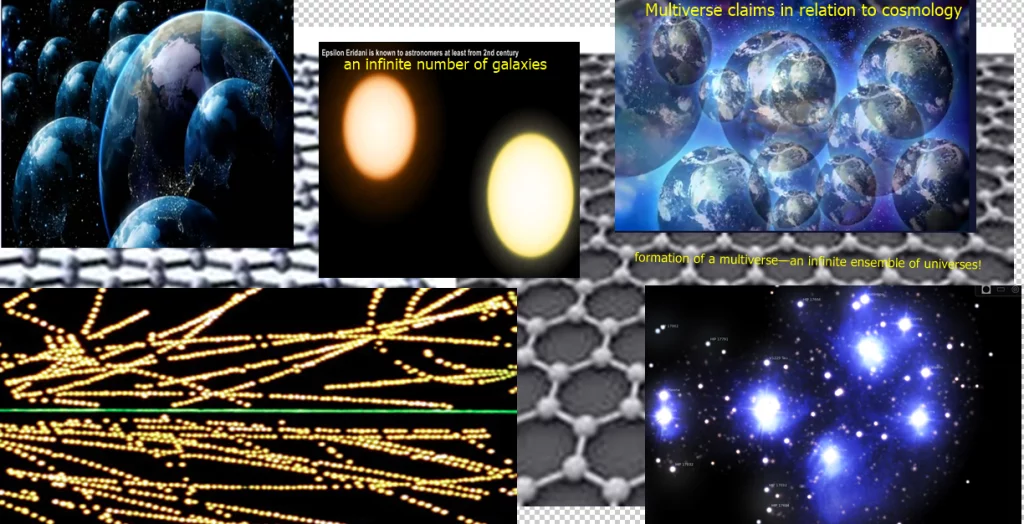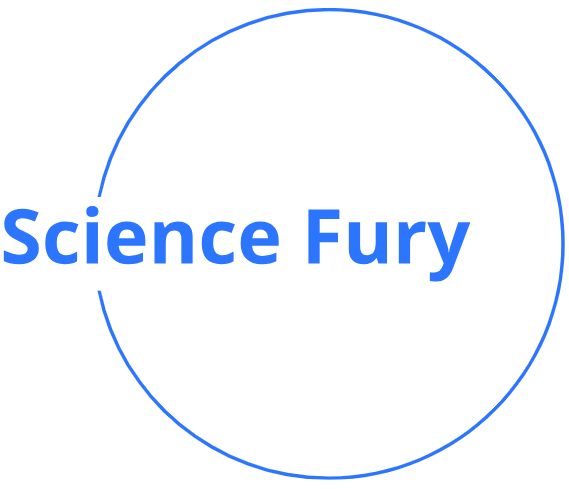The concept of the multiverses has long captivated the imagination of scientists, philosophers, and science fiction writers alike. The idea that our universe is not alone, but rather one of an infinite number of parallel universes, each with its own unique history and laws of physics, is both mind-boggling and deeply intriguing.

What is the Multiverse?
The multiverse is a hypothetical set of multiple universes. The term was first coined by William James in 1895, and it has since been used to describe a wide range of ideas about the nature of reality.
One of the most common interpretations of the multiverse is the many-worlds interpretation of quantum mechanics. This theory suggests that every possible outcome of an event occurs in a separate universe. For example, when we flip a coin, there are two possible outcomes: heads or tails. According to the many-worlds interpretation, both of these outcomes occur, and each one happens in a separate universe.
Another interpretation of the multiverse is the eternal inflation theory. This theory suggests that our universe is just one of many “bubbles” that are constantly forming in an inflating field of energy. Each bubble is a separate universe with its own laws of physics.
Evidence for the Multiverse
There is currently no scientific evidence to prove or disprove the existence of the multiverse. However, there are a few pieces of evidence that are consistent with the idea of a multiverse.
For example, the cosmic microwave background radiation (CMB) is a faint afterglow of the Big Bang. The CMB is remarkably uniform, but it also has a few tiny fluctuations. These fluctuations could be explained by the fact that our universe is interacting with other universes in the multiverse.
Another piece of evidence for the multiverse is the existence of multiple black holes. Black holes are regions of spacetime where gravity is so strong that nothing, not even light, can escape. When two black holes collide, they can merge to form a single, larger black hole. However, it is also possible that the two black holes merge to form a wormhole, which is a tunnel that connects two different universes.
Different types of multiverses
The concept of a multiverse, the existence of multiple universes, has intrigued scientists and philosophers for centuries. While the idea remains purely theoretical, several hypotheses have been proposed to explain the possibility of multiple universes. These hypotheses fall into two broad categories:
Level 1 Multiverses:
Level 1 multiverses exist within the same cosmological framework as our own universe. They are distinguished by variations in the physical laws or constants governing their existence. These variations can lead to vastly different physical realities, ranging from universes devoid of life to universes teeming with exotic forms of life.
Eternal Inflation Multiverse: This hypothesis suggests that our universe is just one bubble in an infinitely expanding sea of universes. As the universe expands, it continuously creates new bubbles, each with its own set of physical laws.
Cyclic Multiverse: This hypothesis proposes that the universe goes through cycles of expansion and contraction, with each cycle ending in a “Big Crunch” that triggers the next cycle’s expansion. In this model, each cycle produces a new universe with slightly different physical laws.
Quantum Multiverse: This hypothesis, also known as the Everett interpretation of quantum mechanics, suggests that every quantum event creates a new universe, one for each possible outcome of the event. This leads to an infinite number of parallel universes, each representing a different path through quantum history.
Level 2 Multiverses:
Level 2 multiverses exist outside our own cosmological framework, often existing in higher dimensions or separate branes. They may have different physical laws, different histories, and even different fundamental particles.
Brane Multiverse: This hypothesis proposes that our universe is a three-dimensional brane embedded in a higher-dimensional space, coexisting with other branes that represent separate universes. These branes may interact with each other through gravity or other forces.
M-theory Multiverse: M-theory, a unified theory of gravity and particle physics, suggests that our universe is just one of many universes that exist within a 11-dimensional multiverse. Each universe is represented by a distinct set of branes and their interactions.
Simulated Reality Multiverse: This hypothesis proposes that our universe is a computer simulation created by an advanced civilization. If this is the case, there could be countless other simulated universes, each with its own unique reality.
It is important to note that the concept of a multiverse remains highly speculative, and there is no definitive evidence to support any of the proposed hypotheses. However, the idea continues to fascinate scientists and philosophers, and ongoing research may one day shed light on the true nature of our universe and the possibility of other universes beyond our own.

The implications of the multiverse for our understanding of the universe?
The concept of a multiverse, the existence of multiple universes, has profound implications for our understanding of the universe. While the idea remains purely theoretical, it challenges our fundamental assumptions about the nature of reality, the laws of physics, and the concept of existence itself.
Implications for the Scale and Origin of the Universe:
Infinite Universe: If the multiverse exists, our universe is not the only one; it is just one of an infinite number of universes. This vast scale challenges our perception of our place in the cosmos and suggests that our universe is not unique but rather a common occurrence in an infinitely expanding multiverse.
Eternal Existence: The multiverse could imply that the universe has always existed and will continue to exist forever. This contrasts with the traditional Big Bang model, which suggests a finite beginning and end to the universe.
Implications for the Laws of Physics:
Varying Constants: Level 1 multiverses suggest that the physical laws and constants that govern our universe may vary in other universes. This could lead to the existence of universes with radically different physical realities, from universes without gravity to universes governed by entirely new forces.
Quantum Mechanics: The multiverse could provide a deeper understanding of quantum mechanics, particularly the superposition principle and the probabilistic nature of quantum events. The many-worlds interpretation of quantum mechanics proposes that every quantum event creates a new universe, one for each possible outcome of the event.
Determinism vs. Free Will: The multiverse could challenge the concept of determinism, the idea that every event is predetermined by the laws of physics. If there are infinite universes with infinite possibilities, then free will may have a greater role in shaping our reality.
Implications for the Concept of Existence:
Multiple Realities: The multiverse suggests that there are multiple realities existing simultaneously, each with its own unique history, laws of physics, and forms of life. This raises questions about the nature of reality and the relationship between different universes.
Anthropic Principle: The anthropic principle suggests that the laws of physics and the conditions of our universe are finely tuned to allow for the existence of life. If there are infinite universes with different laws, then the anthropic principle may need to be re-evaluated.
Meaning and Purpose: The vastness and complexity of the multiverse could have profound implications for our understanding of meaning and purpose in life. If we are just one of an infinite number of possible conscious beings, then our individual lives may seem less significant or meaningful.
The concept of a multiverse remains a speculative hypothesis, but it has profound implications for our understanding of the universe, the laws of physics, and the concept of existence itself. As research and theoretical exploration continue, we may one day gain a deeper understanding of the multiverse and its impact on our perception of reality.
What are the challenges of studying the multiverse?
Studying the multiverse is an incredibly challenging endeavor, as it involves exploring hypothetical realities that exist beyond our direct observation. Several key challenges hinder our ability to study and understand the multiverse:
1. Observational Limitations:
One of the primary challenges is the lack of direct observational evidence for the multiverse. Since other universes are by definition outside our own, we cannot directly observe or interact with them. This makes it difficult to test hypotheses about the multiverse and gather empirical data to support or refute its existence.
2. Theoretical Ambiguities:
The various multiverse hypotheses, such as the eternal inflation multiverse, the cyclic multiverse, and the quantum multiverse, each have their own theoretical ambiguities and uncertainties. These ambiguities arise from the limitations of our current understanding of physics and the complexities of modeling multiple universes.
3. Falsifiability and Verification:
In science, the ability to falsify or verify a hypothesis is crucial for its acceptance and refinement. However, in the case of the multiverse, it is extremely difficult, if not impossible, to design experiments or observations that could definitively prove or disprove its existence.
4. Mathematical Complexity:
The mathematical frameworks used to model the multiverse often involve complex equations and higher-dimensional spaces. This complexity makes it challenging to analyze and interpret the implications of these models, further hindering our ability to make concrete predictions or derive testable hypotheses.
5. Philosophical Considerations:
The concept of the multiverse raises profound philosophical questions about the nature of reality, the existence of other conscious beings, and the meaning of our own existence. These philosophical considerations add another layer of complexity to the study of the multiverse.
Despite these challenges, scientists and philosophers continue to explore the multiverse concept, seeking theoretical insights and potential avenues for indirect observation. Advancements in cosmology, quantum mechanics, and string theory may eventually provide new tools and perspectives for understanding the multiverse and its implications for our understanding of the universe.

What are the future prospects for multiverse research?
The future of multiverse research holds exciting possibilities, with advancements in theoretical frameworks, technological capabilities, and interdisciplinary collaboration paving the way for deeper understanding and potential breakthroughs.
Theoretical Advancements:
Continued development of theoretical frameworks, such as string theory and M-theory, could provide deeper insights into the nature of the multiverse and the mechanisms by which it might exist.
Indirect Observational Evidence:
Searches for indirect signatures of the multiverse, such as the detection of cosmic voids or the observation of gravitational waves from colliding branes, could provide evidence for the existence of other universes.
Technological Advancements:
Improvements in observational technology, such as the development of more powerful telescopes and detectors, could open up new avenues for exploring the multiverse and its potential implications.
Interdisciplinary Collaboration:
Collaboration between physicists, cosmologists, mathematicians, and philosophers could lead to a more comprehensive understanding of the multiverse and its implications for our understanding of reality.
Public Engagement:
Engaging the public in discussions about the multiverse could foster a deeper appreciation for the scientific process and the importance of exploring fundamental questions about the nature of our universe.
These advancements hold the potential to revolutionize our understanding of the cosmos, challenging our current perceptions of reality and opening up new avenues for scientific exploration. While the multiverse remains a hypothetical concept, the pursuit of understanding it drives us to push the boundaries of knowledge and uncover the profound mysteries of the universe.
The Interplay of Artificial Intelligence and the Multiverse
Artificial intelligence (AI) and the concept of the multiverse have some potential connections. Here are a few ways in which AI could be applied to the study of the multiverse:
AI-powered simulations: AI could be used to create simulations of the multiverse that could help us to test different hypotheses about its structure and evolution. These simulations could also be used to explore the implications of the multiverse for our own universe.
AI-assisted data analysis: AI could be used to analyze large datasets of astronomical data, such as cosmic microwave background radiation data, to search for patterns that could be evidence of the multiverse.
AI-based tools for theoretical exploration: AI could be used to develop new tools for exploring the mathematical and theoretical aspects of the multiverse, such as new ways to model the behavior of branes or to calculate the probabilities of different universes existing.
AI-driven communication and outreach: AI could be used to develop new ways to communicate the concept of the multiverse to the public, as well as to engage in discussions about the philosophical implications of the idea.
AI-assisted discovery of new physics: AI could be used to identify anomalies in data that could lead to the discovery of new physics, which could potentially shed light on the existence of the multiverse.
While these are just a few examples, it is clear that AI has the potential to play a significant role in our understanding of the multiverse. As AI research continues to advance, we may one day see AI-powered breakthroughs in our quest to understand the nature of our universe and its place in the multiverse.
FAQs
Q: What is the difference between the multiverse and parallel universes?
The terms “multiverse” and “parallel universes” are often used interchangeably, but there is a subtle difference between the two. The multiverse is a more general term that refers to the possibility of multiple universes, while parallel universes are specifically universes that are similar to our own.
Q: If there are other universes, can we travel to them?
According to most theories of the multiverse, it is not possible to travel to other universes. This is because the universes are thought to be separated by vast distances or by barriers that we cannot overcome.
Q: What does the existence of the multiverse mean for the future of humanity?
The existence of the multiverse would have profound implications for the future of humanity. It would mean that we are not alone in the universe, and that there are an infinite number of other worlds out there to explore. This would open up new possibilities for scientific discovery and technological advancement.
Conclusion
The multiverse is a fascinating and controversial concept that has captured the imagination of scientists and philosophers for centuries. While there is currently no scientific evidence to prove or disprove the existence of the multiverse, the possibility of multiple universes raises many intriguing questions about the nature of reality and our place in the cosmos. As we continue to explore the universe, we may one day find the answers to these questions and unlock the secrets of the multiverse.
